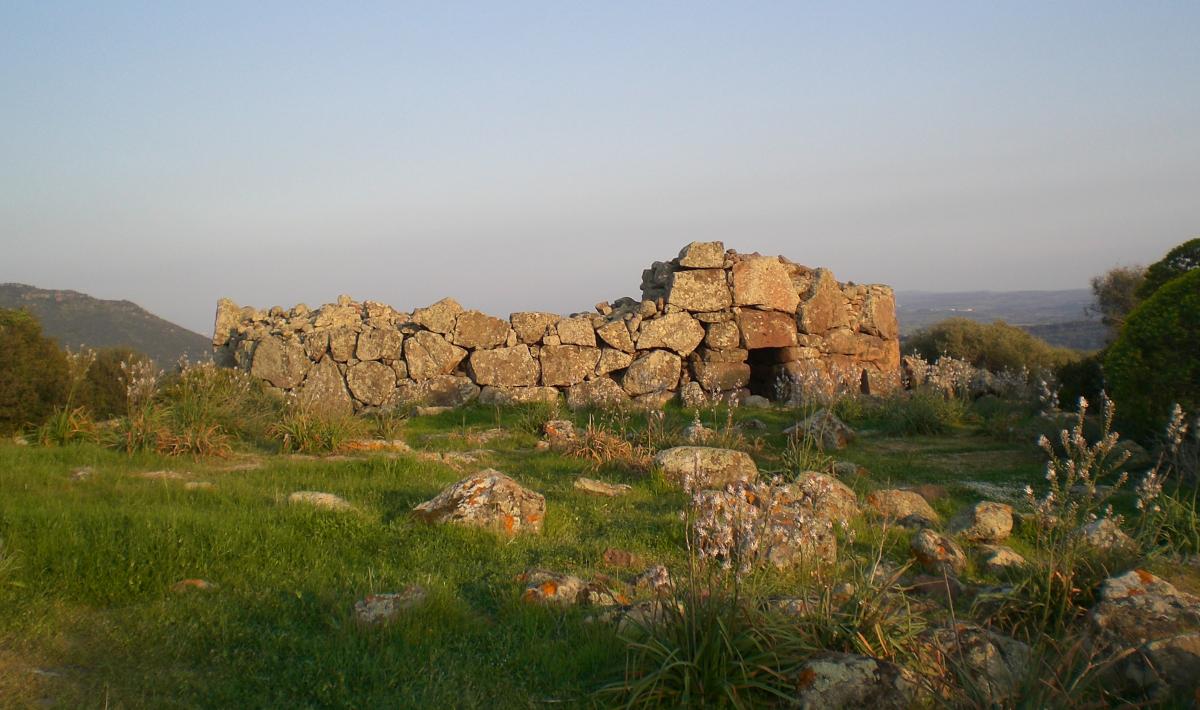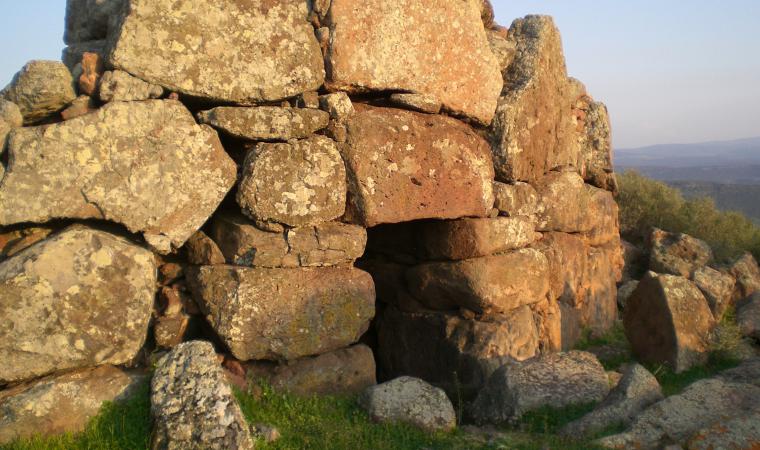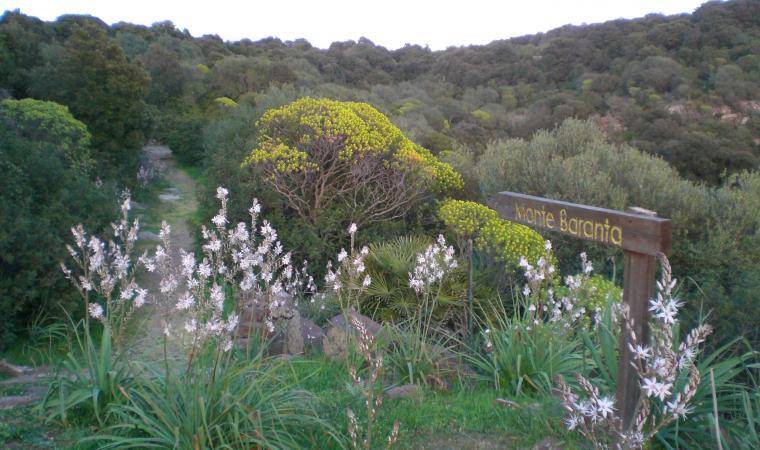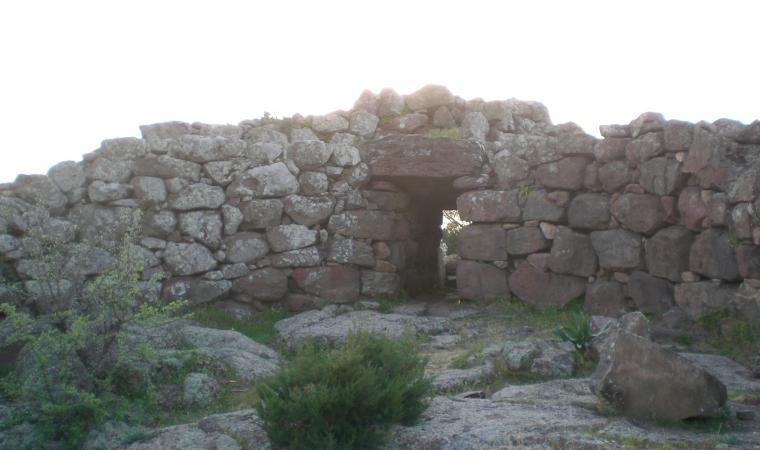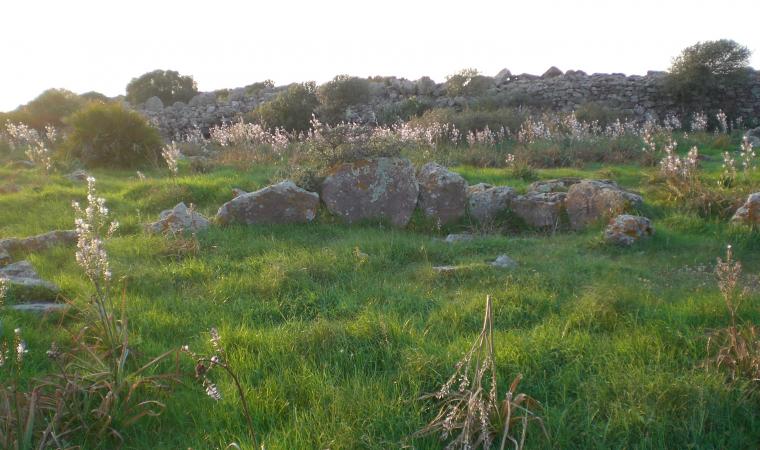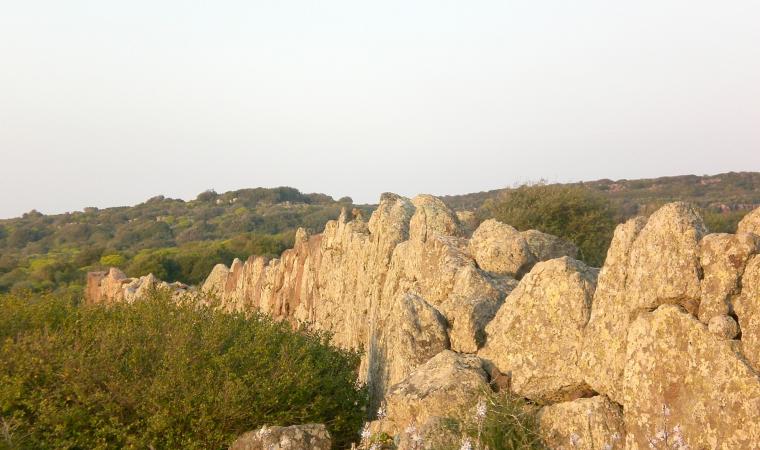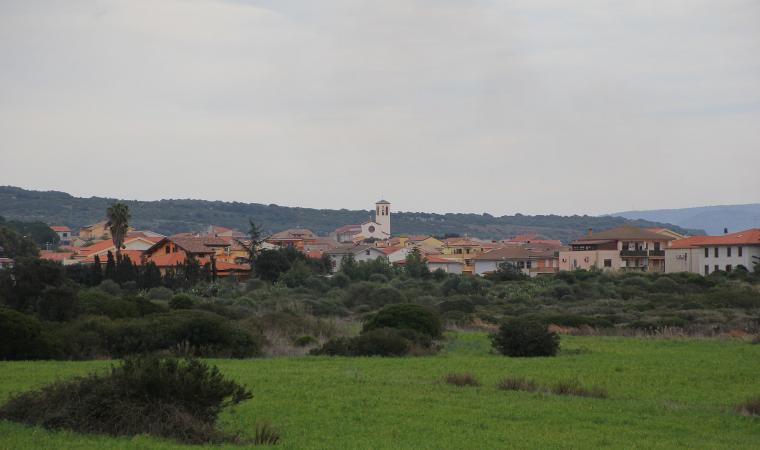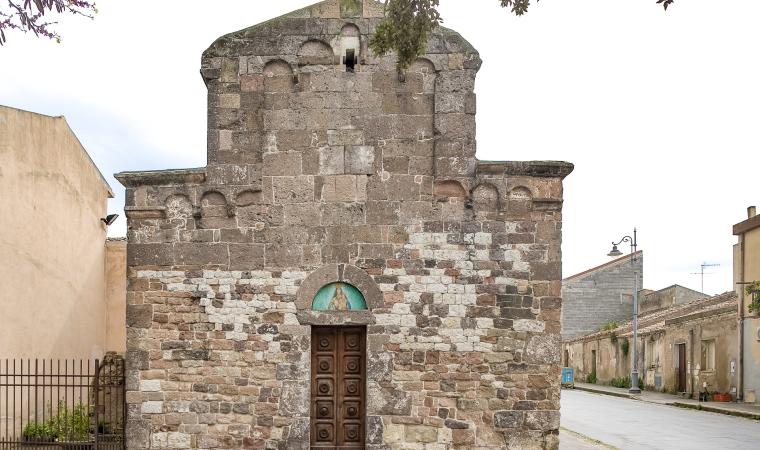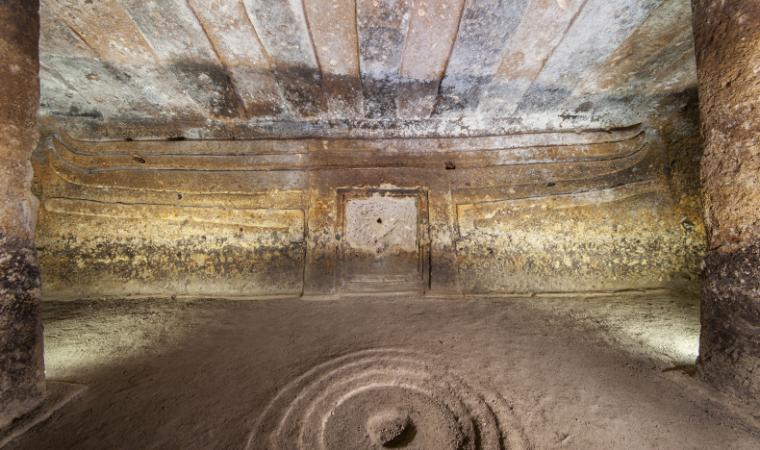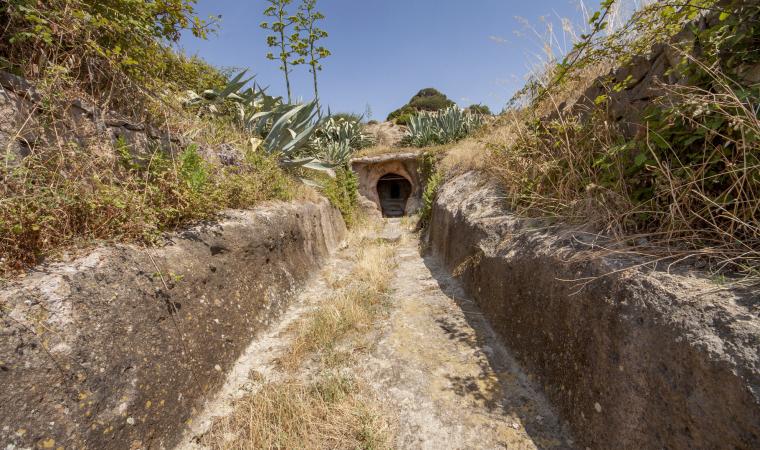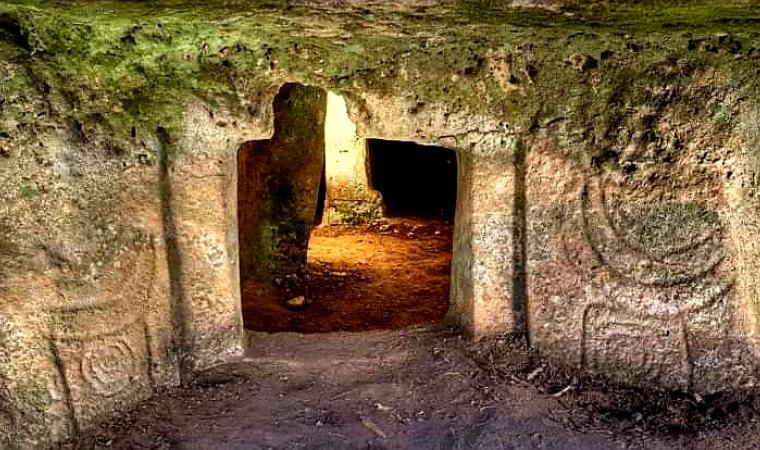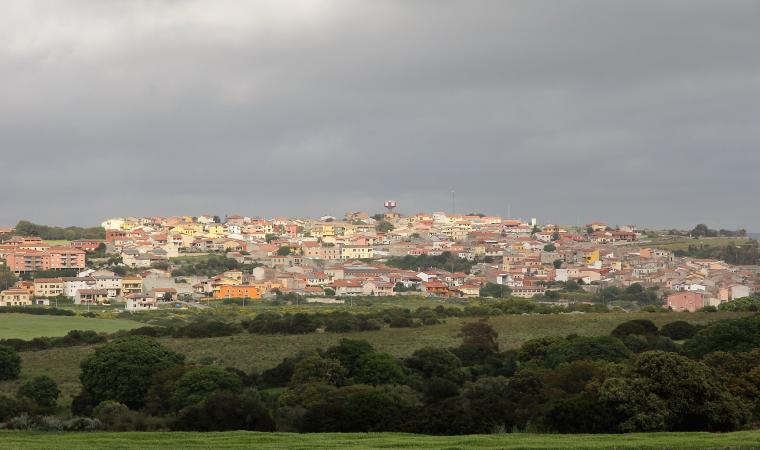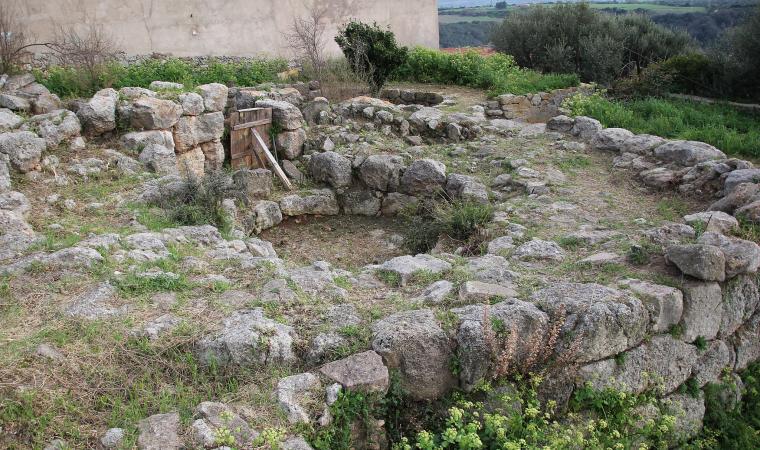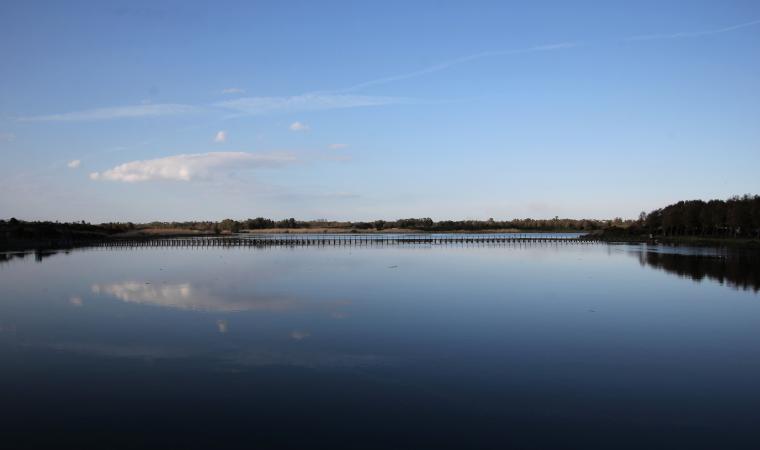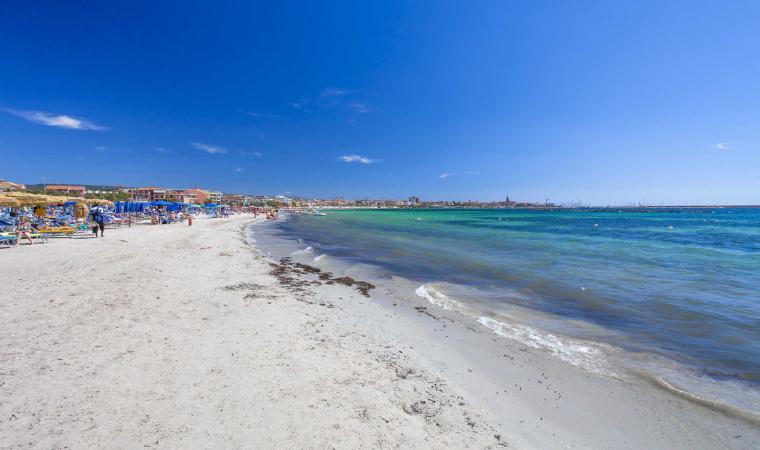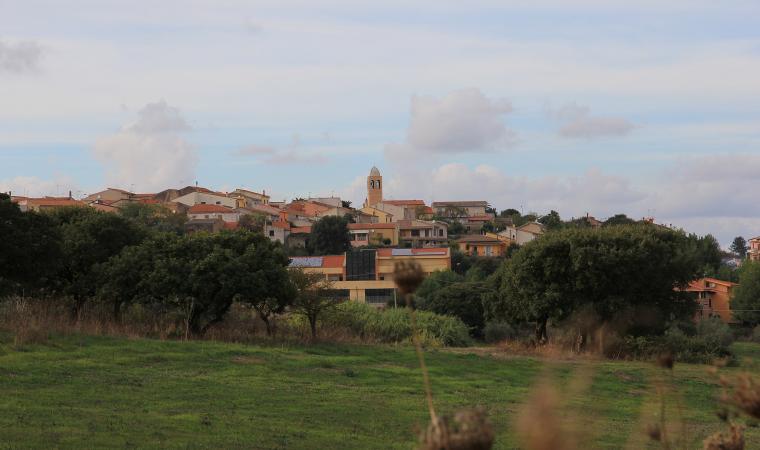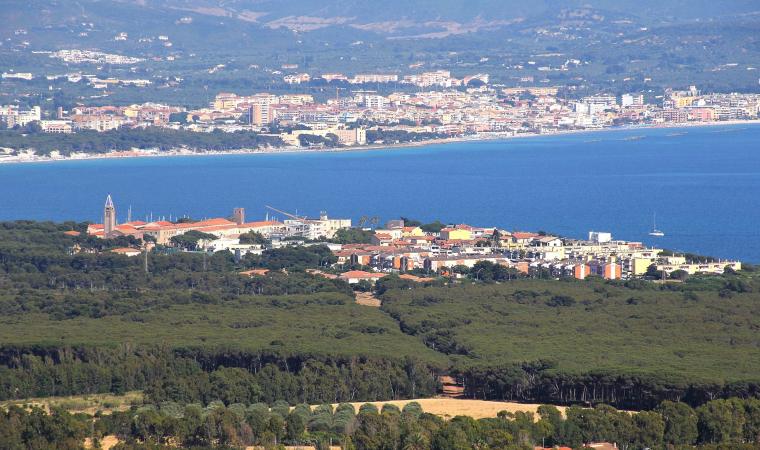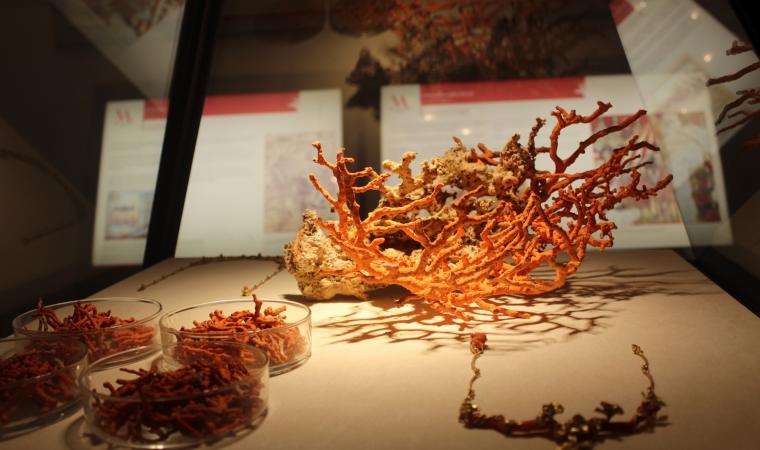Huge boulders create an impenetrable 100 metre long and 3 metre high wall. It’s the great wall of the fortress built by pre-Nuragic settlers to defend their wide fertile valley, and it is one of the most remarkable and massive settlements from the III millennium BC in all of the Mediterranean basin. It sits on the slopes of Mount Baranta just 3 kilometres from Olmedo, an important industrial/agricultural town in the heart of the Nurra region. Also known as su Casteddu, the fortress dates to the Copper Age (2500-2000 BC) and was constructed with massive megalithic structures following the natural contours of the terrain. Protected by walls, the fortress is comprised of a wall-tower and a group of rectangular huts. Everything here is imposing, built with large rocks and boulders: even the horse-shoe shaped tower is huge, six and a half meters thick and nine metres high. It sits perched on an outcrop of trachyte over the valley below.
At the far end of the wall is a sacred area with a megalithic circle where worship and sacrifices were carried out. It is made up of 80 standing straight up in a 10 metre wide circle. Between the rocks are characteristic menhir, one split into two pieces, another whole lying on a rocky raise, perfectly polished. East of the wall you will also find the remains of a small village. Seven large, rectangular, multi-room dwellings have so far been identified.
The Monte Baranta megalithic complex was a busy place, bustling with the military, religious and civic activities of the pre-Nuragic people who lived there. You can feel a touch of insecurity in the air, a fear of attack from the outside that urged the settlers of the Monte Claro culture to seek protection inside an impenetrable construction.
Just after its construction, Su Casteddu was lived in for a relatively short period of time, as shown by the paucity of period relics found during digs and the fact that the area of worship remains unfinished. The site was repopulated during the Early Bronze Age and then, more sporadically, during Nuragic and Roman times. Proof of the vitality and density of the population can also be seen in the surrounding area, in the Olmedo region that counts some twenty nuraghe, including those of Mount Ortolu (a corridor construction), Masala (tholos) and sa Femina, remarkable for the fact that is was built in town.

